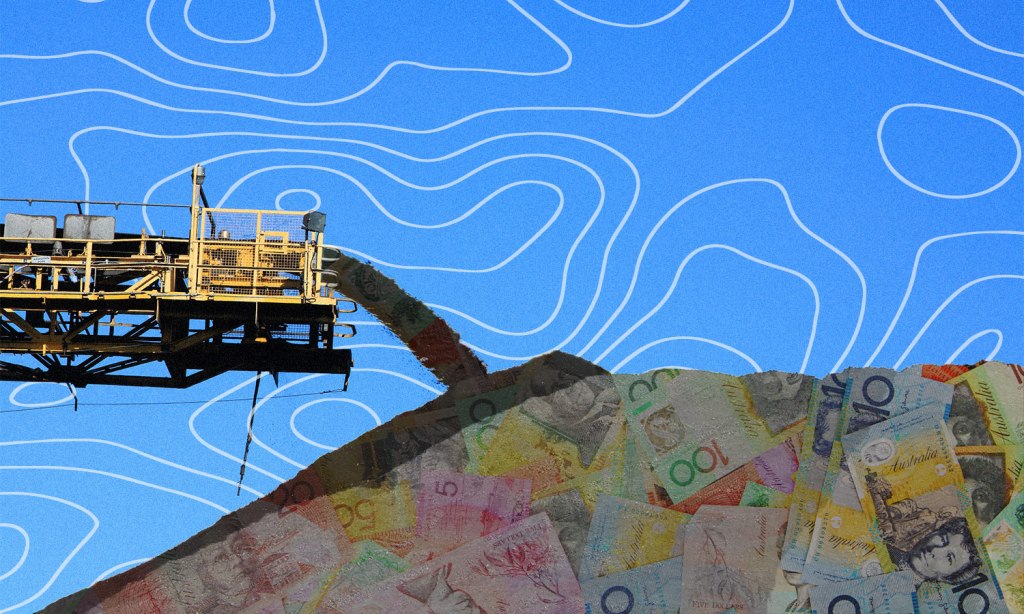In 2022, the Australian public voted in a Labor government. Or, rather, they voted out a Coalition government, electing teal independent candidates, Greens MPs, and others who ran on an agenda of climate action.
Since that election, Labor has confirmed that it will open 46,000 square kilometres of offshore land for oil and gas exploration, granting 10 exploration permits off the coast of the NT, WA, and VIC. This move came just weeks after passing their 2030 climate target to reduce greenhouse gas emissions by 43% by that date.
The catch here is that virtually all of Australia’s gas is exported, meaning that these fossil fuel reserves we’re digging up and selling to be burnt in other countries won’t count towards our own emissions.
Now, the Albanese government is set to give $500 million to coal-fired power stations in NSW and QLD. This doesn’t sound like the urgent climate action that is needed or was spoken about during the passage of the 2030 emissions target or at COP27, which Albanese did not attend.
Albanese said at the time of the exploration grants that Labor’s plan to transition to 82% renewable energy by 2030 “doesn’t mean … you can stop using fossil fuel sources today.”
That announcement was made by Resources Minister Madeleine King, who said that “offshore petroleum exploration … is vital for the economy and meeting the energy needs of Australians.”
“At the same time as we strive to reduce emissions it must be emphasised that continued exploration for oil and gas in Commonwealth waters is central to alleviating future domestic gas shortfalls,” she said.
This seems to be the central paradox at the heart of the Australian economy: the system is both based upon and threatened by the need to dig up and sell fossil fuels.
The Greens’ spokesperson Peter Which-Wilson said at the time of the decision that, “we already have enough oil and gas in reserves to trigger catastrophic climate change to our planet.”
“There’s no plausible excuse for Labor to put our marine ecosystems in jeopardy for the sake of a few profit-driven interests to drill for the exact same product that is killing our oceans,” he added.
If a 43% reduction in domestic emissions is neither robust enough nor even possible to achieve with the current strategy, just why the hell are we pursuing such a policy? And what does all of this have to do with a further half a billion we’re handing to the coal industry?
Why Is Australia Giving $500 Million to the Coal Industry?
This $500 million handout is ‘compensation’ for the energy price cap plan that was passed at the end of last year. That plan also hands $1.5 billion in relief to households and businesses to offset the rising cost of energy caused by the war in Ukraine and the near collapse of our energy market last year.
The plan will cap the amount power generators can sell energy for at $12 per gigajoule. This will “only” see electricity bills rise by 23% by June of this year. The price of coal will also be capped at $125 per tonne. However, buying and selling at that price will mean that some coal-fired power stations will lose money. Therefore, the government is paying them to keep generating power, even at a loss, to ensure energy stability.
$12 per gigajoule is more than what energy was being sold before the war in Ukraine. This time last year, gas energy was going for $9.20.
“Arguably setting a price at $12 is too high and will slow down our transition away from gas because it will artificially make it too profitable, just like the [Ukraine] war,” Independent MP Zoe Daniel said.
“Allowing Australian manufacturers to access energy at a reasonable price will not break these companies.”
At the time that the legislation passed, the oil and gas industry spit the dummy, demanding an urgent meeting with the government, This was something that Energy Minister Chris Bowen said was the industry “trying to preserve the big profits they were making while the war in Ukraine is going on.”
Still, the deal passed and now we’re in a position where taxpayer money is being used to prop up an industry hell-bent on wrecking the planet because we don’t have viable alternatives. Renewable energy is nowhere near large enough to power the states that mainly rely on coal and we can’t just shut off the fossil fuels without causing major blackouts. Therefore, we’re coughing up.
That being said, this $500 million is a drop in the ocean compared to the $11.6 billion spent by all state, territory, and federal governments in 2021-2022, according to the Australia Insitute.
“It is perverse that Australian governments continue to subsidise fossil fuel production and consumption while communities across the country are bearing the costs of disasters exacerbated by fossil fuel use,” said Rod Campbell, Research Director at the Australia Institute.
“This is bad economics and even worse climate policy. We are witnessing Australia’s flood-stricken communities trying to pick up the pieces while fossil fuel interests are cashing in the tune of over $22,000 a minute.
Those subsidies are continuing to grow, with $55.3 billion locked in over the next ten years. This is 10 times the budget of the Emergency Response Fund and 56 times the budget of the National Recovery and Resilience Agency.
Related: No Right to Protest: What Are the New Anti Protest Laws Being Used to Lock Up Climate Activists?
Related: So Here It Is, Merry Climate Change, Nobody’s Having Fun
Read more stories from The Latch and subscribe to our email newsletter.

